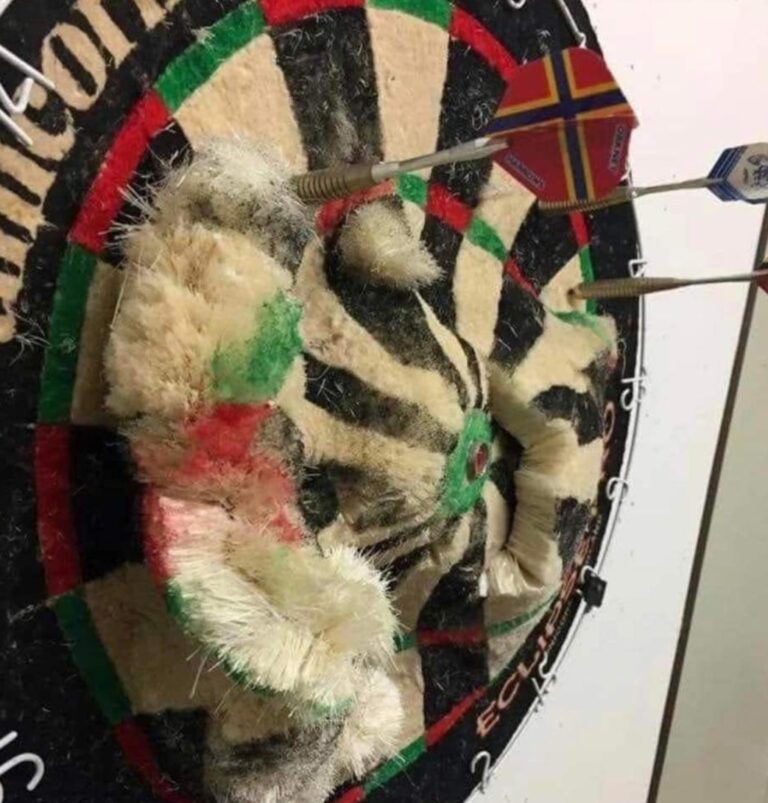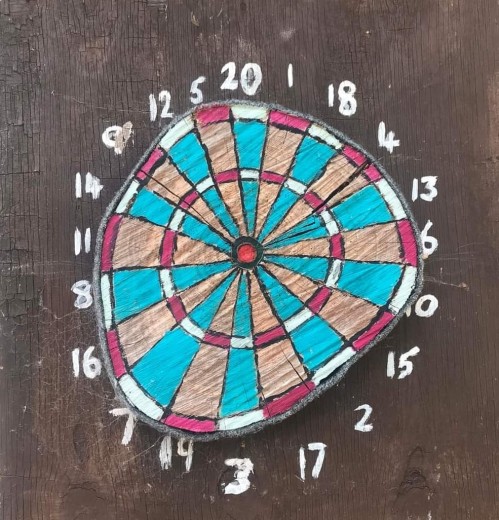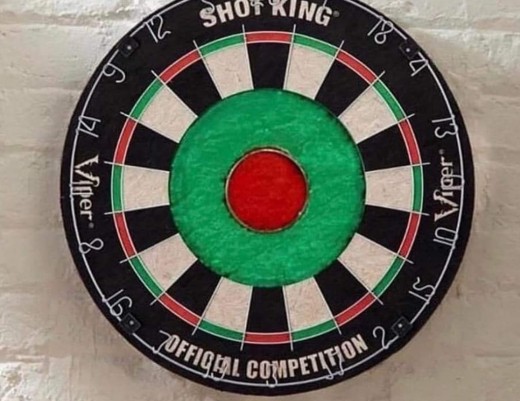Monday, August 27, 2018
Column 563
Rest in Peace, John McCain
Tucked away somewhere in the “sweaty hubbub of Vietnam’s capital of Hanoi is an air-conditioned oasis of American military life they call ‘The Ranch.’” According to Newsweek’s chief political correspondent, Howard Fineman, the installation is equipped with “basketball and volleyball courts, clipped lawns, a motel-style barracks and (even) a pub called the Banana Bar.” Word has it the Banana Bar has a dart board that gets some pretty serious action. Unfortunately, you can’t prove this by me.
As an acquaintance of mine put it to me a few months back, “the bar’s at our office in Hanoi. We look for POWs and MIAs from the war. It’s a little shack, kind of quaint, and at night we throw darts and drink Tiger beer. It’s not open to the locals though because it’s on an American military compound. It would make a good story.”
So, I did a little research. The Ranch is the headquarters of something called the “Joint Task Force Full Accounting.” It’s the last remnant of what once was America’s 500,000-man presence in Vietnam. Its objective is to fully account for every last serviceman missing or unaccounted for during the Vietnam War.
Teams of American scientists and anthropologists work together with members of Vietnam’s Office for Seeking Missing Persons to “comb the jungles and mountains of the countryside, and the shallow ocean floor off the coast. They look for fragments of bone, or airplane parts, battle deadly snakes and unexploded ordinance, and try to probe the fading memories of aging Vietnamese who may have some dim recollection worth noting. The easy-to-find bodies have already been found, and the Joint Task Force is working in the hardest places — places the Vietnamese themselves find forbidding.”
When my friend, Viet Nguyen, arrived to pick me up earlier tonight I was more than just disappointed that he was driving a florescent-purple motorbike instead of a car. I was scared to death.
In Vietnam, motorbikes are even more dangerous than dodging cobras and still-ticking bombs in the rainforest. I kid you not. “Hop on,” said Viet, nonchalantly. “Where is the darts?” For years, I had been promising to take Viet along on one of my quests for the Holy Grail(s) of our sport — the perfect darts bar and coldest damn beer on the planet.
Carefully, we edged into the swarm of colorful motorbikes that, like giant motorized flies, constantly buzz the streets of Hanoi. At last count there were more than eleven million scooters here. A curious mix of belief in fate and old-fashioned vanity contribute to the almost universal disregard for head gear. Away we zipped…
The rules of the road commonly accepted in the west do not apply in Hanoi. Traffic lights are a relatively new introduction and widely disregarded. It’s not uncommon to see motorbikes heading the wrong way down a street. Vehicles stopped in traffic do not pull off to the side of the road. Friends on bikes and scooters like to ride abreast and catch up on conversation, often holding hands in a chain effect.
“The place is called The Ranch,” I yelled from the back of Viet’s Honda. “It’s a military installation. Do you know of it?”
Slowly Viet brought his machine to a stop. On the sidewalk to our right an old woman shouldered a heavy basket of fruit as she hustled past boxes of televisions piled high in front of a small store. Thousands of bicyclists and what seemed like whole families squeezed onto motorbikes whizzed by us on either side as we straddled the bike in the middle of the road.
“You have letter?” Viet seemed concerned.
I was concerned too — we were stopped in the middle of the frickin’ road! “What letter?” I asked.
“I know this place. Can not get in without letter. I can not go no way. You know other place?”
Damn. I didn’t have a letter. And I did know I needed one. My contact had advised me of this and offered to arrange for my access. I’d just never followed up — I figured I could talk my way past the gate.
“Do you know of Hanoi Towers?” I asked. I was ready with a backup plan.
Built by the French in 1904 and for decades called Maison Centrale, the site which now supports the several-story Hanoi Towers hotel and office complex, was once a sprawling French colonial fortress. When Vietnam was under French rule, prisoners here were subject to torture and execution. After the French were defeated at the battle of Dien Bien Phu in 1954 — leading to the division of communist North Vietnam and non-communist South Vietnam and the precursor for America’s military involvement in the region — the Vietnamese renamed the building Hoa Lo Prison. During the war American prisoners nicknamed the prison the “Hanoi Hilton.” Rumor had it that at this address today stood one of the most popular restaurants and darts bars in Hanoi.
“It just few blocks,” responded Viet.
“Have you heard of Jacc’s?” I asked.
“Yes! Used to be Red Onion. I been there. You want go?”
“Let’s do it!” Carefully we edged back into the swarm of traffic and humanity.
When John McCain’s A-4E Skyhawk was shot from the sky in 1967 he parachuted into Truc Bac Lake on the outskirts of town. With two broken arms and a broken leg he was dragged from the lake by an angry crowd and beaten. Then for five and half years — two of them in solitary confinement with leg irons — he lived at the Hanoi Hilton. The old jail housed over 300 American pilots at various periods during the war.
Slowly Viet rounded a busy corner. Before me stood the thick, grey stone walls of the former prison. On the Hai Ba Trung Street side, still standing is the huge arched double doorway through which prisoners — first Vietnamese and then American — arrived in giant trucks. The etched letters of the Maison Centrale are still legible in the stone. Adjacent to the west end of the old prison wall is a modern high-rise building. Next to the building and backing up to the wall is small parking lot. Viet and I whipped between a couple of white lines, locked up his motorbike and headed into the building and onto an elevator.
“We almost there,” advised my friend as he pressed the elevator button and the doors squeezed together in front of us.
The Vietnamese tore down most of Hoa Lo Prison in 1993 to make way for the space on which Viet and I now stood: the Hanoi Towers, 49 Hai Ba Trung. Jacc’s is on the 4th Floor. What remains of the notorious Hanoi Hilton is now a museum and popular tourist attraction. McCain himself visited twice.
Owned by Australian Craig Jackson and second only to the Spotted Cow (23-C Hai Ba Trung) Jacc’s is probably the most popular darts bar in the former North Vietnam. It’s one of Hanoi’s hot spots for everything from a business power lunch to an upscale evening out with whomever it is you’re trying to impress. A mix of locals and expatriates dine on fare ranging from grilled salmon to traditional Vietnamese pho (rice noodle soup — as common in Vietnam as a cheeseburger is in Toledo). The view of the city from the oversized windows is spectacular.
If you stand up from your table and look down you can see over the wall of the former prison. “That’s the way it is in Vietnam these days.” I was told. “Look in one direction and you see the past; look in another and you see the future.” Frankly, I found it all just a little bit eerie. I was about to throw darts with my Vietnamese friend and I was going to do it on a board hung, essentially, on top of the very site of the infamous Hanoi Hilton prison.
In a classy, little glass room to the far left side of the restaurant and bar are two properly hung and well lit Puma “Bandit” boards. The chalkboards are decent. There’s even chalk. A rubber mat lines the floor in front of each board. Four or five small tables are stationed optimally around the room so the play can be observed in comfort. At the entry end of the room is a special window to the larger bar, set up to cater to just the darters in the house. League play is on Wednesdays. There’s a Luck of the Draw on Friday nights.
Viet and I spent about an hour at Jacc’s — time enough for a few beers and some instruction in the basics of the sport. He’d never handled a dart before so I showed him the proper grip, stance and stroke. I explained the rules of 501 and cricket, talked about counting and shared some of the history of the sport. We commiserated a good bit — I regaled him with some of my recent travels and exploits. He seemed quite fascinated with our conversation.
“Wow! You can kick butt of great Phil Taylor, Eric Bristow and John Lowe!” he remarked at one point, duly impressed. “You used to date Jane Fonda!” he exclaimed at another. As I stepped to the line to demonstrate I explained that, indeed, all this was absolutely true.
Set. Stroke. Release. My first dart arched its way on line towards the bull but found the three instead, a half-inch low. My second and third arrows landed slightly left and right of center. Another handful and another, and yet another, saw my darts continue to stick around — but not in — the bull. Damn.
“I have question?” Viet said as I stepped to the line again.
“Of course, that’s how you learn,” I replied.
“I ask respectfully, you understand, in my capacity as Prime Minister…”
“Huh? Sure.”
Viet winked. “Are not darts supposed to actually hit bulls-eye? I think Jane Fonda not be impressed.”
Funny guy. Around midnight we unchained Viet’s motorbike and prepared to snake our way to my final destination. Politely I declined his offer to drive. Yep, funny, funny guy.
Back into the sea of colorful traffic we merged. I’d say it was approximately five minutes later that we were hit by the truck.
No. No. It was five minutes later that Viet dropped me off in front of the Spotted Cow, the vibrant center of Hanoi’s darts community. We bid our farewells. Viet motored off to meet up with his girlfriend and I wandered into the smoke and crowd towards the boards in the rear.
The night was still young. Besides, I was only just beginning to hit the stride of my bullshit.
From the Field,
Dartoid








